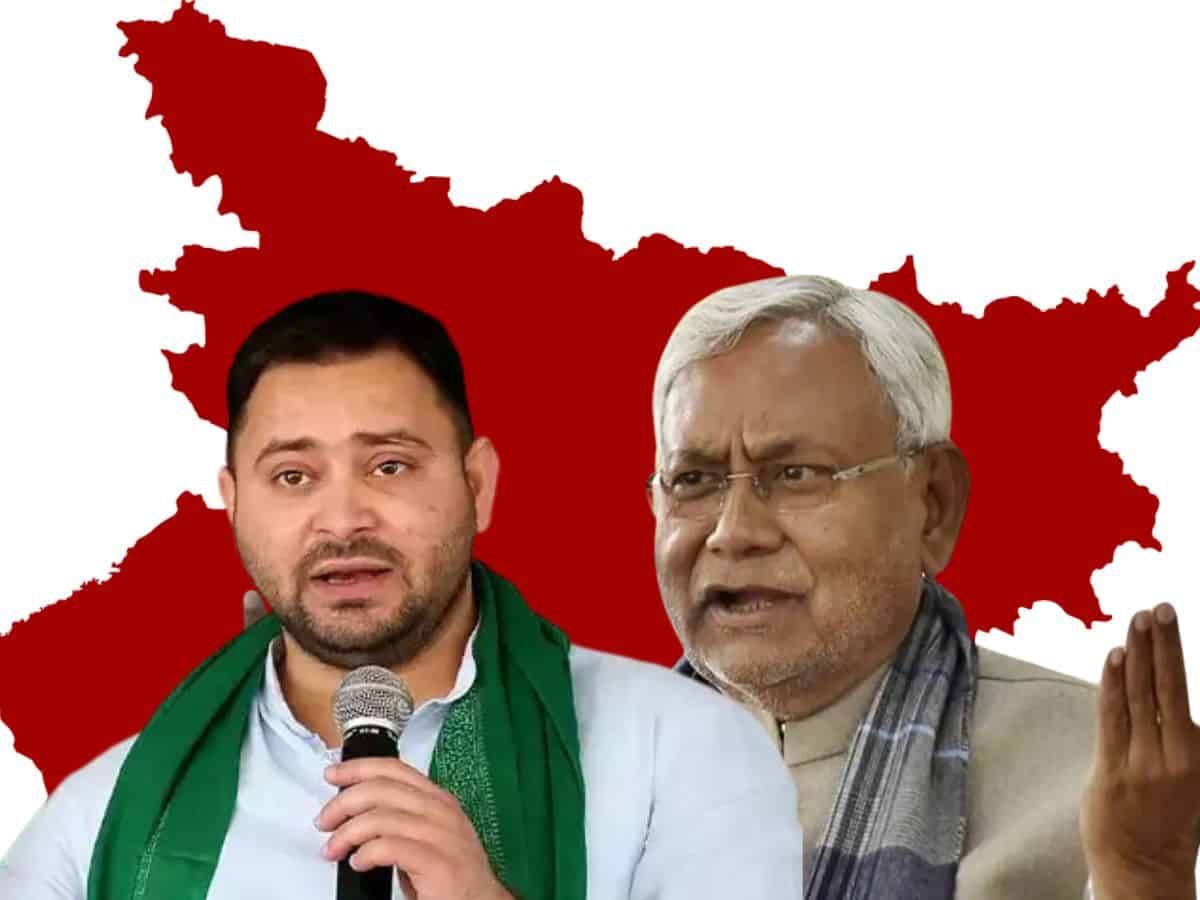
The presence of two prominent backward castes figures in Bihar—one in each camp–against one in Uttar Pradesh made the real difference in the result for 2024 Lok Sabha election. While in the latter Samajwadi Party leader, Akhilesh Prasad Singh took on the upper caste-led and dominated Bharatiya Janata Party, which had Yogi Adityanath, as its face, in Bihar chief minister Nitish Kumar is still a key backward castes’ leader, who was challenged by young Tejashwi Prasad Yadav, son of Rashtriya Janata Dal chief, Lalu Prasad Yadav.
Though the National Democratic Alliance won 30 seats against nine by the Indian National Developmental Inclusive Alliance yet percentage-wise the former suffered a serious setback. It saw a more than eight percent decline in the total vote share in comparison to 2019. In contrast, there was a sharp rise in the voting percentage of INDIA.
The Janata Dal (United)’s vote fell by 3.75% to 18.52% that of the BJP by 3.5% to 20.5%. The Lok Janshakti Party’s share came down from about eight percent to 6.5%.
On the other hand, RJD got 22.14% votes in 2024 against 15.7% in 2019 when it drew a blank. The tally this time is four when it contested on 23 seats.
Its alliance partner Congress ended up with 9.2% against 7.9% last time. The Congress registered victory in three seats against one five years back when the NDA made a clean sweep walking away with 39 out of 40 seats. The party contested nine seats.
The Left parties, which contested separately in 2019 were INDIA constituents and got more than five per cent votes. The CPI-ML (Liberation) bagged two seats. Its strike rate was highest as it fielded its candidates in three constituencies and got 2.99% votes.
The CPI and CPI (M) could not open an account though they fought on one seat each. They secured 1.33 % and 0.87% votes respectively.
The Vikassheel Insaf Party, which also contested three seats but could not win any, also got some votes.
No division of OBC votes
In Uttar Pradesh, there was no division of backward castes’ votes which got transferred to the SP-Congress alliance. Apart from the Akhilesh factor, Rahul and Priyanka Gandhi campaigned extensively there. In Bihar, the entire load of electioneering was left on the young shoulders of Tejashwi, who too was suffering from backbone pain. His aging father just addressed a few meetings in his daughters’ constituencies of Pataliputra and Saran.
The result of Bihar re-confirmed the importance of Nitish Kumar, who was written off by many political commentators. But he had an advantage. Against RJD whose partners were relatively weak parties in Bihar, Janata Dal (United) allies were BJP, which is a strong party, and LJP, a Dalit outfit. The two other NDA constituents in the state are Hindustani Awam Morcha, another Dalit party of former chief minister Jitan Ram Manjhi, and Upendra Kushwaha’s Rashtriya Lok Morcha.
In UP Bahujan Samaj Party, a prominent Dalit party, fought alone and got around 9.5 % votes. A substantial number of BSP votes shifted to the SP-Congress combine.
Division in Muslim, Yadav votes
Notwithstanding this disadvantage, which was reflected in the result, it is a fact that the RJD-led combine can pose a serious challenge to the NDA in next year’s Assembly election.
Though there was bickering in both the camps the truth is that INDIA was let down in several constituencies by its core vote-bank, Muslims and Yadavas. INDIA lost Siwan, Purnea, Araria, and Saran because of the serious division of Muslim and Yadav votes.
Besides, unlike in UP, the presence of Nitish at the helm of NDA failed to create strong anti-Narendra Modi sentiment among the Dalits, Extremely Backward Castes, and Muslims. The latter in some constituencies voted for Janata Dal (United) candidates but not for the BJP. In Bihar, many Muslim youths were busy on social media criticizing Lalu Prasad Yadav and Tejashwi for not giving the community their due. They were either the supporters of All India Majlis-e-Ittehad-ul-Muslimeen or Prashant Kishor’s Jan Suraaj. Kishor who has undertaken state-wise padayatra is especially focussed on Muslim and upper caste vote-bank.
Going by the war of words in social media in a sizeable section among Muslims one can conclude that the agenda of many youths was not how to counter the Narendra Modi-led onslaught. But to distract the attention towards some other issues, especially the ‘exploitation’ of the community by the secular parties.
While some youths, especially in constituencies where the Muslim population is substantial, were locked in this useless debate, the elder community leaders could not get any idea of what was going on beneath.
This created a sort of indifference among many Muslim voters. The vested interests, especially Muslim leaders of Janata Dal (United) fully exploited this situation.
This did not happen in UP where the Samajwadi Party and Congress together gave tickets to only five Yadavas and six Muslims out of a total of 80 seats. In Moradabad, the SP replaced its sitting Muslim MP with a Hindu candidate, yet the community wholeheartedly voted for him. The target there was to get rid of Modi and Yogi.



